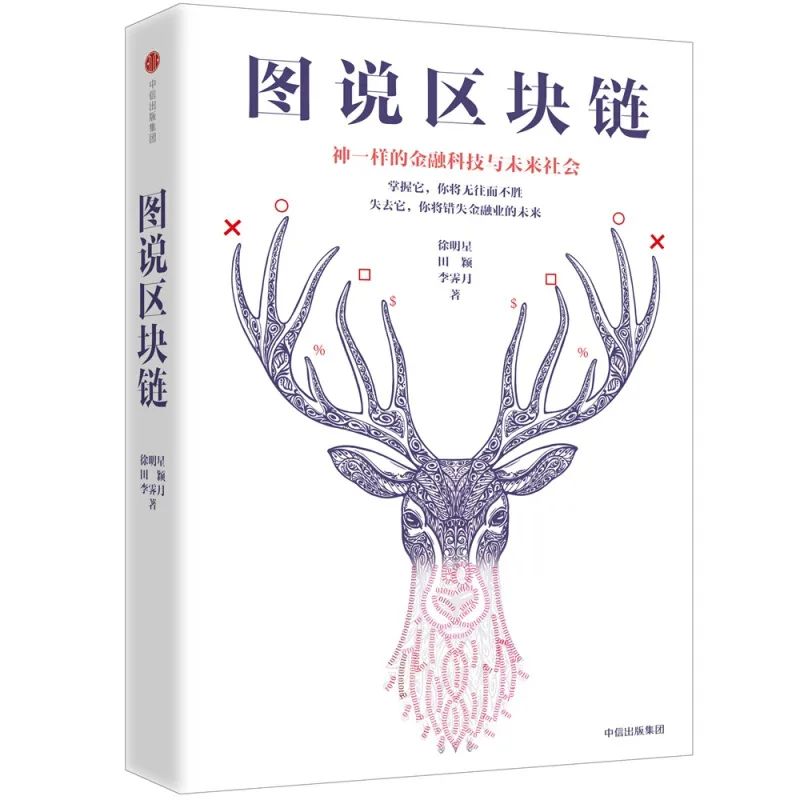1.11。使用JSR 330标准注解
从Spring 3.0开始,Spring提供了对JSR-330标准注解(依赖注入)的支持。
这些注解的扫描方式与Spring注解相同。
要使用它们,您需要在类路径中包含相关的jar。
如果你使用Maven, javax。 注入工件在标准Maven存储库中可用(https://repo1.maven.org/maven2/javax/inject/javax.inject/1/)。 你可以添加以下依赖到你的文件pom.
1.11.1。@Inject和@Named
除了@Autowired,您可以使用@javax.inject.Inject注入:
import javax.inject.Inject;public class SimpleMovieLister { private MovieFinder movieFinder; @Inject public void setMovieFinder(MovieFinder movieFinder) { this.movieFinder = movieFinder; } public void listMovies() { this.movieFinder.findMovies(...); // ... }}
与@Autowired一样,你可以在字段级、方法级和构造参数级使用@Inject。
此外,您可以将注入点声明为提供者,从而允许按需访问作用域较短的bean,或者通过Provider.get()延迟调用访问其他bean。
以下示例提供了先前示例的变体:
import javax.inject.Inject;import javax.inject.Provider;public class SimpleMovieLister { private Provider<MovieFinder> movieFinder; @Inject public void setMovieFinder(Provider<MovieFinder> movieFinder) { this.movieFinder = movieFinder; } public void listMovies() { this.movieFinder.get().findMovies(...); // ... }}
如果要为应该注入的依赖项使用qualified名称,则应使用@Named批注,如以下示例所示:
import javax.inject.Inject;import javax.inject.Named;public class SimpleMovieLister { private MovieFinder movieFinder; @Inject public void setMovieFinder(@Named("main") MovieFinder movieFinder) { this.movieFinder = movieFinder; }}
与一样@Autowired,@Inject也可以与java.util.Optional或 一起使用@Nullable。
这在这里更为适用,因为@Inject它没有required属性。
以下示例展示了如何使用@Inject和 @Nullable:
public class SimpleMovieLister { @Inject public void setMovieFinder(Optional<MovieFinder> movieFinder) { // ... }}
public class SimpleMovieLister { @Inject public void setMovieFinder(@Nullable MovieFinder movieFinder) { // ... }}
1.11.2。@Named和@ManagedBean:
您可以使用@javax.inject.Named或@javax.annotation.ManagedBean代替@Component
如以下示例所示:
import javax.inject.Inject;import javax.inject.Named;@Named("movieListener") // @ManagedBean("movieListener") could be used as wellpublic class SimpleMovieLister { private MovieFinder movieFinder; @Inject public void setMovieFinder(MovieFinder movieFinder) { this.movieFinder = movieFinder; } // ...}
在不指定Component名称的情况下使用@Component是很常见的。
@Named也可以以类似的方式使用,如下面的示例所示:
import javax.inject.Inject;import javax.inject.Named;@Namedpublic class SimpleMovieLister { private MovieFinder movieFinder; @Inject public void setMovieFinder(MovieFinder movieFinder) { this.movieFinder = movieFinder; } // ...}
当使用@Named或时@ManagedBean,可以使用与使用Spring注解完全相同的方式来使用组件扫描,如以下示例所示:
@Configuration@ComponentScan(basePackages = "org.example")public class AppConfig { // ...}
与相比@Component,JSR-330的@Named和JSR-250的ManagedBean 注解是不可组合的。
1.11.3。JSR-330标准注解的局限性
当你使用标准注解时,你应该知道一些重要的特性是不可用的,如下表所示:
| Spring | javax.inject.* | javax.inject限制/解释 |
|---|
| @Autowired | @Inject | @Inject没有"required"属性。
可以与Java 8一起使用Optional |
| @Component | @Named/@ManagedBean | JSR-330没有提供可组合模型,
只是提供了一种识别已命名组件的方法。
就是说这俩注解仅仅是把类标识为bean |
| @Scope("singleton") | @Singleton | JSR-330的默认作用域类似于Spring的prototype。
但是,为了保持它与Spring的一般默认值一致,
在Spring容器中声明的JSR-330 bean在默认情况下是单例的。
为了使用除singleton之外的作用域,
您应该使用Spring的@Scope注解。
javax.inject包中还提供了一个@Scope注解。
不过,这个注解仅用于创建您自己的注解。
具体例子就看同层级包下的@Singleton注解就可以了 |
| @Qualifier | @Qualifier / @Named | javax.inject.Qualifier只是用于构建自定义限定符的元注解。
具体String qualifiers (例如Spring的带有value的@Qualifier)
可以通过javax.inject.Named关联。 |
| @Value | -- | no equivalent |
| @Required | -- | no equivalent |
| @Lazy | -- | no equivalent |
| ObjectFactory | Provider | javax.inject.Provider是Spring的
直接替代方法ObjectFactory,
只是get()方法名称较短。
它也可以与Spring@Autowired或
非注解构造函数和setter方法结合使用。 |
1.12。基于Java的容器配置
本节介绍如何在Java代码中使用注解来配置Spring容器。它包括以下主题:
- 基本概念:@Bean和@Configuration
- 使用实例化Spring容器 AnnotationConfigApplicationContext
- 使用@Bean注解
- 使用@Configuration注解
- 组成基于Java的配置
- Bean定义配置文件
- PropertySource 抽象化
- 使用 @PropertySource
- 声明中的占位符解析
1.12.1。基本概念:@Bean和@Configuration
Spring的新Java配置支持中的主要组件是-带@Configuration注解的类和-带@Bean注解的方法。
@Bean注解用于指示方法实例化、配置和初始化的新对象并将由Spring IoC容器管理。
对于那些熟悉Spring的元素相同的角色。
您可以对任何Spring @Component使用@bean注解的方法。
但是,它们最常与@Configuration bean一起使用。
用@Configuration注解类表明它的主要用途是作为bean定义的源。
此外,@Configuration类通过调用同一类中的其他@Bean方法来定义bean间的依赖关系。
最简单的@Configuration类如下:
@Configurationpublic class AppConfig { @Bean public MyService myService() { return new MyServiceImpl(); }}
上一AppConfig类等效于以下Spring
<beans> <bean id="myService" /></beans>
Full @Configuration 与 "lite" @Bean?当@Bean方法在没有使用@Configuration注解的类中声明时,它们被称为在"lite"模式下处理。与 full 的@Configuration不同,lite@Bean方法不能声明bean之间的依赖关系。 Spring会正常实例化 lite @Bean,并执行依赖注入 但是单独调用这个@Bean方法的话,就仅仅是执行new 操作没有进行依赖注入在常见的场景中,@Bean方法将在@Configuration类中声明,以确保始终使用"full"模式,这样可以使用方法之间互相调用。并防止通过常规Java调用意外地调用相同的@Bean方法,这有助于减少在"lite"模式下操作时难以跟踪的细微错误。
下面几节将深入讨论@Bean和@Configuration注解。
但是,首先,我们将介绍使用基于java的配置创建spring容器的各种方法。
1.12.2。使用AnnotationConfigApplicationContext实例化Spring容器
下面几节介绍了Spring3.0中引入的AnnotationConfigApplicationContext。
这个多功能的ApplicationContext实现不仅可以接受@Configuration类作为输入,还可以接受普通的@Component类和用JSR-330元数据注解的类。
当@Configuration类作为输入提供时,@Configuration类本身被注册为bean定义,类中所有声明的@bean方法也被注册为bean定义。
当@Component和JSR-330类被提供时,它们被注册为bean定义,并且会被用在在必要的地方进行注入,比如@Autowired或@Inject。
Simple Construction
与使用Spring
如下面的示例所示,这允许完全不使用
public static void main(String[] args) { ApplicationContext ctx = new AnnotationConfigApplicationContext(AppConfig.class); MyService myService = ctx.getBean(MyService.class); myService.doStuff();}
如前所述,AnnotationConfigApplicationContext不仅限于仅使用@Configuration类。@Component可以将任何一个或带有JSR-330注解的类作为输入提供给构造函数,如以下示例所示:
public static void main(String[] args) { ApplicationContext ctx = new AnnotationConfigApplicationContext(MyServiceImpl.class, Dependency1.class, Dependency2.class); MyService myService = ctx.getBean(MyService.class); myService.doStuff();}
前面的例子中假定MyServiceImpl,Dependency1以及Dependency2使用Spring依赖注入注解,例如@Autowired。
通过使用编程方式构建容器 register(Class<?>…)
您可以AnnotationConfigApplicationContext使用no-arg构造函数实例化一个对象,然后使用register()方法配置它。
以编程方式构建AnnotationConfigApplicationContext时,此方法特别有用。
以下示例显示了如何执行此操作:
public static void main(String[] args) { AnnotationConfigApplicationContext ctx = new AnnotationConfigApplicationContext(); ctx.register(AppConfig.class, OtherConfig.class); ctx.register(AdditionalConfig.class); ctx.refresh(); MyService myService = ctx.getBean(MyService.class); myService.doStuff();}
使用启用组件扫描 scan(String…)
要启用组件扫描,您可以@Configuration按如下方式注解您的类,此处不用加(.*):
@Configuration@ComponentScan(basePackages = "com.acme") public class AppConfig { ...}
ComponentScan注解启用组件扫描。
有经验的Spring用户可能熟悉Springcontext:命名空间中的
<beans> <context:component-scan base-package="com.acme"/></beans>
在前面的示例中,将扫描com.acme包以查找任何带 @Component注解的类,
并将这些类注册为容器内的Spring bean定义。
AnnotationConfigApplicationContext公开此scan(String…)方法以允许相同的组件扫描功能,如以下示例所示:
public static void main(String[] args) { AnnotationConfigApplicationContext ctx = new AnnotationConfigApplicationContext(); ctx.scan("com.acme"); ctx.refresh(); MyService myService = ctx.getBean(MyService.class);}
请记住,@Configuration的元注解用@Component,所以他们是组件扫描候选人。 在前面的示例中,假设AppConfig在com.acme包(或下面的任何包)中声明,则在调用scan()期间将扫描到。 通过refresh()方法,其所有@Bean方法都将在容器内进行处理并注册为Bean定义。
支持Web应用程序 AnnotationConfigWebApplicationContext
一个基于AnnotationConfigApplicationContext的WebApplicationContext变种是AnnotationConfigWebApplicationContext。
可以使用此实现来配置Spring ContextLoaderListenerservlet监听器,Spring MVC的 DispatcherServlet。
以下web.
<web-app> <!-- 配置 ContextLoaderListener来使用AnnotationConfigWebApplicationContext 替换默认的 default
1.12.3。使用@Bean注解
@Bean是方法级别的注解,是元素的直接类似物。
注解提供的某些属性,例如:* init-method * destroy-method * autowiring * name *。
你可以一个注解@Configuration-annotated或在 @Component-annotated类使用@Bean。
声明一个bean
要声明一个bean,可以用注解对方法进行@Bean注解。
方法返回值的类型就是在ApplicationContext中注册的bean定义的类型。
默认情况下,Bean名称与方法名称相同。
以下示例显示了@Bean方法声明:
@Configurationpublic class AppConfig { @Bean public TransferServiceImpl transferService() { return new TransferServiceImpl(); }}
前面的配置与下面的Spring
<beans> <bean id="transferService" /></beans>
这两个声明都使名为transferService的bean在ApplicationContext中可用,该bean绑定到类型为TransferServiceImpl的对象实例,
如下图所示:
transferService -> com.acme.TransferServiceImpl
您还可以使用@Bean将接口(或基类)作为返回类型声明您的方法,
如以下示例所示:
@Configurationpublic class AppConfig { @Bean public TransferService transferService() { return new TransferServiceImpl(); }}
如果您一直通过声明的服务接口引用您的类型,@Bean返回类型可以安全地加入到设计决策中。但是,对于实现多个接口的组件或其实现类型可能引用的组件,声明最具体的返回类型更安全(至少与引用bean的注入点所需的返回类型相同)。
Bean依赖
带@Bean注解的方法可以具有任意数量的参数,这些参数描述了构建该bean所需的依赖关系。
例如,如果我们TransferService需要AccountRepository,我们可以使用方法参数来实现该依赖关系,如以下示例所示:
@Configurationpublic class AppConfig { @Bean public TransferService transferService(AccountRepository accountRepository) { return new TransferServiceImpl(accountRepository); }}
解析机制与基于构造函数的依赖注入几乎相同。
接收生命周期回调
使用@Bean注解定义的任何类都支持常规的生命周期回调,并且可以使用JSR-250中的@PostConstruct和@PreDestroy注解。
还完全支持常规的Spring生命周期回调。
如果bean实现InitializingBean,DisposableBean或Lifecycle,则容器将调用它们各自的方法。
还完全支持标准*Aware接口集(例如BeanFactoryAware, BeanNameAware, MessageSourceAware, ApplicationContextAware等)。
该@Bean注解支持指定任意初始化和销毁回调方法,就像Spring
public class BeanOne { public void init() { // initialization logic }}public class BeanTwo { public void cleanup() { // destruction logic }}@Configurationpublic class AppConfig { @Bean(initMethod = "init") public BeanOne beanOne() { return new BeanOne(); } @Bean(destroyMethod = "cleanup") public BeanTwo beanTwo() { return new BeanTwo(); }}
默认情况下,使用Java配置定义的具有公共close或shutdown方法的bean将自动与销毁回调一起调用。比如这样:在容器销毁的时候就会被调用,不需要继承任何接口@Beanpublic class ServiceFour { public void close(){ System.out.println("20201030-close"); }}如果您有一个公共的close或shutdown方法,并且不希望在容器关闭时调用它,那么可以将@Bean(destroyMethod="")添加到Bean定义中,以禁用默认(推断)模式。@Bean(destroyMethod="")public class ServiceFour { public void close(){ System.out.println("20201030-close"); }}默认情况下,您可能希望对使用JNDI获取的资源执行此操作,因为它的生命周期是在应用程序外部管理的。特别是,确保总是对数据源执行此操作。以下示例显示如何阻止数据源的自动销毁回调:@Bean(destroyMethod="")public DataSource dataSource() throws NamingException { return (DataSource) jndiTemplate.lookup("MyDS");}此外,对于@Bean方法,通常使用程序化JNDI查找,方法是使用SpringJndiTemplate或JndiLocatorDelegate辅助方法,或者直接InitialContext使用JNDI, 但不使用JndiObjectFactoryBean变体(这将迫使您将返回类型声明为FactoryBean类型,而不是实际的目标类型,不是目标类型的话就很难使其他的@Bean方法来交叉调用此方法)。
对于上述示例中的BeanOne,在构造过程中直接调用init()方法同样有效,如下例所示:
@Configurationpublic class AppConfig { @Bean public BeanOne beanOne() { BeanOne beanOne = new BeanOne(); beanOne.init(); return beanOne; } // ...}
当您直接使用Java工作时,您可以对对象执行任何操作,而不必总是依赖于容器生命周期。
指定Bean范围
Spring包含@Scope注解,以便您可以指定bean的范围。
使用@Scope注解
@Bean默认作用域是singleton,但是您可以使用@Scope注解覆盖它,如以下示例所示:
@Configurationpublic class MyConfiguration { @Bean @Scope("prototype") public Encryptor encryptor() { // ... }}
@Scope 和 scoped-proxy
Spring提供了一种通过作用域代理处理作用域依赖关系的方便方法。
在使用
<bean id="serviceOne" > <aop:scoped-proxy /> </bean>
用@Scope注解在Java中配置bean提供了与proxyMode属性相同的支持。
默认设置为无代理(ScopedProxyMode.NO),但您可以指定ScopedProxyMode.TARGET_CLASS or ScopedProxyMode.INTERFACES。
<?
如果您使用Java Config将上述
// an HTTP Session-scoped bean exposed as a proxy@Bean@SessionScopepublic UserPreferences userPreferences() { return new UserPreferences();}@Beanpublic Service userService() { UserService service = new SimpleUserService(); // a reference to the proxied userPreferences bean service.setUserPreferences(userPreferences()); return service;}
自定义Bean命名
默认情况下,配置类使用@Bean方法的名称作为结果bean的名称。
但是,可以使用name属性覆盖此功能,如以下示例所示:
@Configurationpublic class AppConfig { @Bean(name = "myThing") public Thing thing() { return new Thing(); }}
Bean别名
正如在命名bean中所讨论的,有时需要为单个bean指定多个名称,或者称为bean别名。
为此,@Bean注解的name属性接受一个字符串数组。
下面的示例演示如何为bean设置多个别名:
@Configurationpublic class AppConfig { @Bean({"dataSource", "subsystemA-dataSource", "subsystemB-dataSource"}) public DataSource dataSource() { // instantiate, configure and return DataSource bean... }}
bean描述
有时,提供bean的更详细的文本描述是很有帮助的。当bean(可能通过JMX)公开以进行监视时,这一点特别有用。
要向@Bean添加说明,可以使用@description注解,如下示例所示:
@Configurationpublic class AppConfig { @Bean @Description("Provides a basic example of a bean") public Thing thing() { return new Thing(); }}
1.12.4。使用@Configuration注解
@Configuration是一个类级别的注解,来指定当前类是一些bean definition的聚合。
@Configuration 类通过public@Bean注解方法声明Bean。
对@Configuration类上的@Bean方法的调用也可以用来定义Bean间的依赖关系。
注入bean间的依赖关系
当bean彼此依赖时,表达这种依赖就像让一个bean方法调用另一个一样简单,如以下示例所示:
@Configurationpublic class AppConfig { @Bean public BeanOne beanOne() { return new BeanOne(beanTwo()); } @Bean public BeanTwo beanTwo() { return new BeanTwo(); }}
在前面的示例中,通过构造函数注入beanOne接收对的引用beanTwo。
仅当@Bean在@Configuration类中声明该方法时,此声明bean间依赖关系的方法才有效。您不能使用普通@Component类声明bean间的依赖关系。
Lookup Method注入
如前所述,Lookup Method注入是一种高级特性,应该很少使用。
在单例范围bean依赖于原型范围bean的情况下,它非常有用。
将Java用于此类配置提供了实现此模式的自然方法。
以下示例演示如何使用查找方法注入:
public abstract class CommandManager { public Object process(Object commandState) { Command command = createCommand(); command.setState(commandState); return command.execute(); } // okay... but where is the implementation of this method? protected abstract Command createCommand();}
通过使用Java配置,可以创建一个覆盖CommandManager抽象createCommand()方法的子类,该方法将以某种方式查找新的(原型)命令对象。以下示例显示了如何执行此操作:
@Bean@Scope("prototype")public AsyncCommand asyncCommand() { AsyncCommand command = new AsyncCommand(); return command;}@Beanpublic CommandManager commandManager() { // return CommandManager 的匿名实现类 并且实现了 createCommand()方法 // return a new 原型类的 Command object return new CommandManager() { protected Command createCommand() { return asyncCommand(); } }}
有关基于Java的配置如何在内部工作的更多信息
考虑以下示例,该示例显示了一个带@Bean注解的方法被调用两次:
@Configurationpublic class AppConfig { @Bean public ClientService clientService1() { ClientServiceImpl clientService = new ClientServiceImpl(); clientService.setClientDao(clientDao()); return clientService; } @Bean public ClientService clientService2() { ClientServiceImpl clientService = new ClientServiceImpl(); clientService.setClientDao(clientDao()); return clientService; } @Bean public ClientDao clientDao() { return new ClientDaoImpl(); }}
clientDao()被clientService1()调用一次和被clientService2()调用一次。
由于此方法创建的新实例ClientDaoImpl并返回它,因此通常来说希望有两个实例(每个服务一个)。
那肯定是有问题的:在Spring中,实例化的bean singleton默认具有作用域。
这就是神奇的地方:所有@Configuration类在启动时都使用子类化CGLIB。在子类中,子方法在调用父方法并创建新实例之前,首先检查容器中是否有任何缓存(作用域)的bean。
根据bean的范围,行为可能有所不同。 我们在这里谈论单例。
从Spring 3.2开始,不再需要将CGLIB添加到您的类路径中,因为CGLIB类已经被重新打包org.springframework.cglib并直接包含在spring-core JAR中。
由于CGLIB在启动时动态添加特性,因此有一些限制。尤其是,配置类不能是final。但是,从4.3开始,配置类上允许使用任何构造函数,包括使用@Autowired或一个用于默认注入的非默认构造函数声明。如果您希望避免任何CGLIB强加的限制,请考虑在非@configuration 类上声明@Bean方法(例如,在普通@Component类上)。然后@Bean方法之间的跨方法调用不会被拦截,但是因此您必须在构造函数或方法级别专门进行依赖的注入,直接调用非@configuration的@Bean方法Spring将不再负责依赖注入。
1.12.5。组成基于Java的配置
Spring基于Java的配置特性允许您编写注解,这可以降低配置的复杂性。
使用@Import注解
正如Spring 该元素来帮助模块化配置一样,该@Import注解允许@Bean从另一个配置类加载定义,如以下示例所示:
@Configurationpublic class ConfigA { @Bean public A a() { return new A(); }}@Configuration@Import(ConfigA.class)public class ConfigB { @Bean public B b() { return new B(); }}
现在,不需要同时指定两者ConfigA.class和ConfigB.class实例化上下文,只需ConfigB显式提供,如以下示例所示:
public static void main(String[] args) { ApplicationContext ctx = new AnnotationConfigApplicationContext(ConfigB.class); // now both beans A and B will be available... A a = ctx.getBean(A.class); B b = ctx.getBean(B.class);}
这种方法简化了容器实例化,因为只需要处理一个类,而不是要求您@Configuration在构造过程中记住大量潜在的类。
从Spring Framework 4.2开始,@Import还支持对常规component 类的引用,类似于该AnnotationConfigApplicationContext.register方法。 如果要通过使用一些配置类作为入口点来显式定义所有组件,从而避免组件扫描,则此功能特别有用。
注入对导入@Bean定义的依赖
前面的示例有效,但过于简单。
在大多数实际情况下,Bean在配置类之间相互依赖。
使用
使用@Configuration类时,Java编译器会在配置模型上施加约束,因为对其他bean的引用必须是有效的Java语法。
幸运的是,解决这个问题很简单。
正如我们已经讨论的那样,一种@Bean方法可以具有任意数量的描述Bean依赖关系的参数。
考虑以下具有多个@Configuration类的更真实的场景,每个类都取决于其他类中声明的bean:
@Configurationpublic class ServiceConfig { @Bean public TransferService transferService(AccountRepository accountRepository) { return new TransferServiceImpl(accountRepository); }}@Configurationpublic class RepositoryConfig { @Bean public AccountRepository accountRepository(DataSource dataSource) { return new JdbcAccountRepository(dataSource); }}@Configuration@Import({ServiceConfig.class, RepositoryConfig.class})public class SystemTestConfig { @Bean public DataSource dataSource() { // return new DataSource }}public static void main(String[] args) { ApplicationContext ctx = new AnnotationConfigApplicationContext(SystemTestConfig.class); // everything wires up across configuration classes... TransferService transferService = ctx.getBean(TransferService.class); transferService.transfer(100.00, "A123", "C456");}
还有另一种方法可以达到相同的结果。
请记住,@Configuration类是在容器中最终只有一个bean:这意味着他们可以利用 @Autowired与@Value注入等功能相同的其它bean。
确保以这种方式注入的依赖项只属于最简单的类型。@Configuration 类在上下文初始化过程中很早就被处理,强制以这种方式注入依赖项可能会导致意外的早期初始化。只要有可能,就尽可能使用基于参数的注入,如前面的示例所示。另外,通过@Bean使用BeanPostProcessor和BeanFactoryPostProcessor定义要特别小心。这些方法通常应该声明为static@Bean方法,而不是触发其包含的配置类的实例化。如果自定义的BeanPostProcessor创建为早于AutowiredAnnotationBeanPostProcessor的bean实例,那么,@Autowired和@Value不适用于配置类本身,
以下示例说明如何将一个bean自动连接到另一个bean:
@Configurationpublic class ServiceConfig { @Autowired private AccountRepository accountRepository; @Bean public TransferService transferService() { return new TransferServiceImpl(accountRepository); }}@Configurationpublic class RepositoryConfig { private final DataSource dataSource; public RepositoryConfig(DataSource dataSource) { this.dataSource = dataSource; } @Bean public AccountRepository accountRepository() { return new JdbcAccountRepository(dataSource); }}@Configuration@Import({ServiceConfig.class, RepositoryConfig.class})public class SystemTestConfig { @Bean public DataSource dataSource() { // return new DataSource }}public static void main(String[] args) { ApplicationContext ctx = new AnnotationConfigApplicationContext(SystemTestConfig.class); // everything wires up across configuration classes... TransferService transferService = ctx.getBean(TransferService.class); transferService.transfer(100.00, "A123", "C456");}
从springframework4.3开始,@Configuration类中的构造函数注入才受支持。还要注意,如果目标bean只定义了一个构造函数,则不需要指定@Autowired。
Fully-qualifying imported beans for ease of navigation
在前面的场景中,使用@Autowired可以很好地工作并提供所需的模块性,但是准确地确定注入的bean定义的声明位置仍然有些模糊。
例如,作为一个正在查看ServiceConfig的开发人员,您如何确切地知道@autowiredaccountrepository bean是在哪里声明的?
如果这种模糊性是不可接受的,并且您希望在IDE中从一个@Configuration类直接导航到另一个@Configuration类,可以考虑自动连接配置类本身。
下面的示例演示如何执行此操作:
@Configurationpublic class ServiceConfig { @Autowired private RepositoryConfig repositoryConfig; @Bean public TransferService transferService() { // navigate 'through' the config class to the @Bean method! return new TransferServiceImpl(repositoryConfig.accountRepository()); }}
在前面的情况下,AccountRepository的定义是完全显式的。
但是,ServiceConfig现在与RepositoryConfig紧密耦合。
这就是取舍。
通过使用基于接口或基于抽象类的@Configuration类,可以在一定程度上缓解这种紧耦合。
考虑以下示例:
@Configurationpublic class ServiceConfig { @Autowired private RepositoryConfig repositoryConfig; @Bean public TransferService transferService() { return new TransferServiceImpl(repositoryConfig.accountRepository()); }}@Configurationpublic interface RepositoryConfig { @Bean AccountRepository accountRepository();}@Configurationpublic class DefaultRepositoryConfig implements RepositoryConfig { @Bean public AccountRepository accountRepository() { return new JdbcAccountRepository(...); }}@Configuration@Import({ServiceConfig.class, DefaultRepositoryConfig.class}) // import the concrete config!public class SystemTestConfig { @Bean public DataSource dataSource() { // return DataSource }}public static void main(String[] args) { ApplicationContext ctx = new AnnotationConfigApplicationContext(SystemTestConfig.class); TransferService transferService = ctx.getBean(TransferService.class); transferService.transfer(100.00, "A123", "C456");}
现在ServiceConfig就具体而言已松散耦合DefaultRepositoryConfig
并且内置的IDE工具仍然有用:您可以轻松地获得实现的类型层次结构RepositoryConfig。
通过这种方式,导航@Configuration类及其依赖项与导航基于接口的代码的通常过程没有什么不同。
如果您想影响某些bean的启动创建顺序,可以考虑将其中一些bean声明为@Lazy(用于在首次访问时而不是在启动时创建)或@DependsOn某些其他bean(确保在当前bean之前创建特定的其他bean,而不是后者的直接依赖关系)。
最好是从例如,在使用Spring 在本节的后面,我们将介绍在这种"以
请记住,@Configuration类最终是容器中的bean定义。
在本系列示例中,我们创建一个@Configuration名为的类,AppConfig并将其包含在其中system-test-config.定义。
因为 context:annotation-config/已打开,所以容器会识别 @Configuration注解并 正确处理@Bean声明的方法AppConfig。
以下示例显示了Java中的普通配置类:
@Configurationpublic class AppConfig { @Autowired private DataSource dataSource; @Bean public AccountRepository accountRepository() { return new JdbcAccountRepository(dataSource); } @Bean public TransferService transferService() { return new TransferService(accountRepository()); }}
以下示例显示了示例system-test-config.
<beans> <context:annotation-config/> <context:property-placeholder location="classpath:/com/acme/jdbc.properties"/> <bean /> <bean > <property name="url" value="${jdbc.url}"/> <property name="username" value="${jdbc.username}"/> <property name="password" value="${jdbc.password}"/> </bean></beans>
以下示例显示了一个可能的jdbc.properties文件:
jdbc.url = jdbc:hsqldb:hsql:// localhost / xdbjdbc.username = sajdbc.password =
public static void main(String[] args) { ApplicationContext ctx = new ClassPath
因为@Configuration元注解是@Component,@Configuration注解的类会自动成为组件扫描的候选类。
使用与前一个例子中描述的相同场景,我们可以重新定义system-test-config.
注意,在这种情况下,我们不需要显式声明context:annotation-config/,因为context:component-scan/启用相同的功能。
以下示例显示了修改后的system-test-config.
<beans> <context:component-scan base-package="com.acme"/> <context:property-placeholder location="classpath:/com/acme/jdbc.properties"/> <bean > <property name="url" value="${jdbc.url}"/> <property name="username" value="${jdbc.username}"/> <property name="password" value="${jdbc.password}"/> </bean></beans>
@Configuration@ImportResource("classpath:/com/acme/properties-config.properties-config.
<beans> <context:property-placeholder location="classpath:/com/acme/jdbc.properties"/></beans>
jdbc.properties
jdbc.url = jdbc:hsqldb:hsql:// localhost / xdbjdbc.username = sajdbc.password = adsdfas
public static void main(String[] args) { ApplicationContext ctx = new AnnotationConfigApplicationContext(AppConfig.class); TransferService transferService = ctx.getBean(TransferService.class); // ...}
本文由博客一文多发平台 OpenWrite 发布!
原文转载:http://www.shaoqun.com/a/485798.html
aeo:https://www.ikjzd.com/w/2356
三维度科技:https://www.ikjzd.com/w/1312
zen cart:https://www.ikjzd.com/w/1282
1.11。使用JSR330标准注解从Spring3.0开始,Spring提供了对JSR-330标准注解(依赖注入)的支持。这些注解的扫描方式与Spring注解相同。要使用它们,您需要在类路径中包含相关的jar。如果你使用Maven,javax。注入工件在标准Maven存储库中可用(https://repo1.maven.org/maven2/javax/inject/javax.inject/1/
自贸区跨境通网站:https://www.ikjzd.com/w/1329
敦煌网站:https://www.ikjzd.com/w/189
2020年深圳哪里有花市?:http://tour.shaoqun.com/a/1105.html
西岭雪山最佳滑雪时间 :http://tour.shaoqun.com/a/56287.html
速卖通2020招商新政:三次考核不过将清退!:https://www.ikjzd.com/home/111204




 返回搜狐,查看更多
返回搜狐,查看更多















































